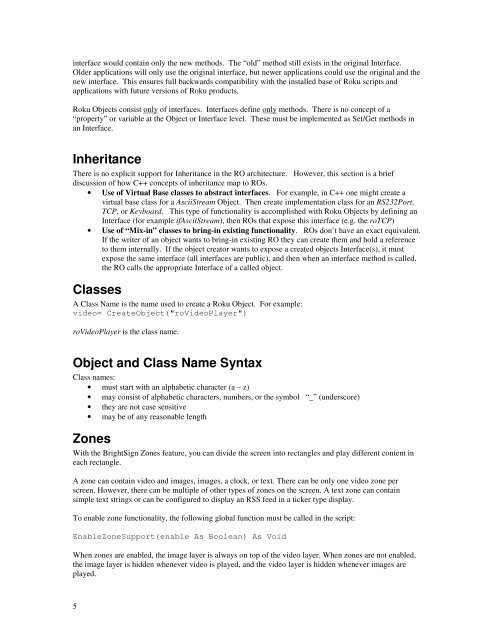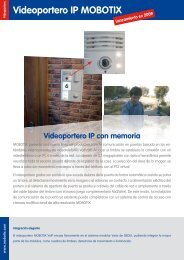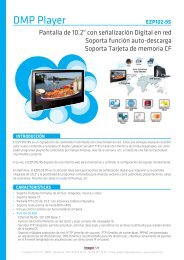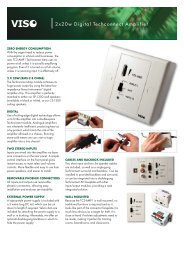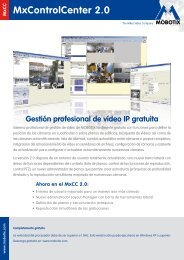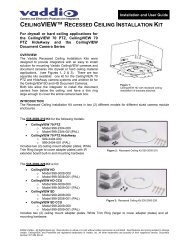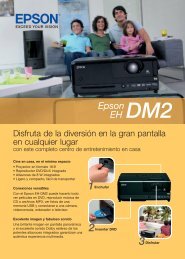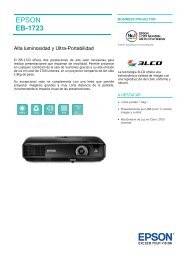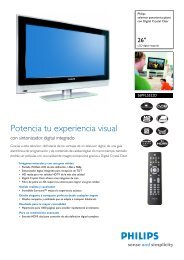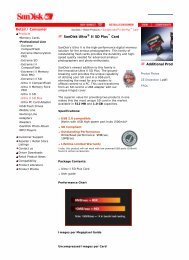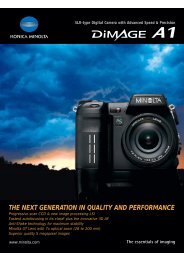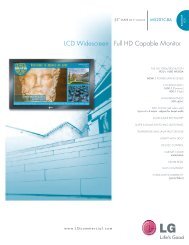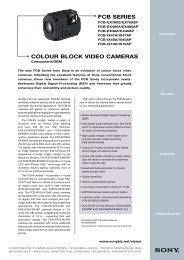Roku Object Reference - imaginArt
Roku Object Reference - imaginArt
Roku Object Reference - imaginArt
You also want an ePaper? Increase the reach of your titles
YUMPU automatically turns print PDFs into web optimized ePapers that Google loves.
interface would contain only the new methods. The “old” method still exists in the original Interface.<br />
Older applications will only use the original interface, but newer applications could use the original and the<br />
new interface. This ensures full backwards compatibility with the installed base of <strong>Roku</strong> scripts and<br />
applications with future versions of <strong>Roku</strong> products.<br />
<strong>Roku</strong> <strong>Object</strong>s consist only of interfaces. Interfaces define only methods. There is no concept of a<br />
“property” or variable at the <strong>Object</strong> or Interface level. These must be implemented as Set/Get methods in<br />
an Interface.<br />
Inheritance<br />
There is no explicit support for Inheritance in the RO architecture. However, this section is a brief<br />
discussion of how C++ concepts of inheritance map to ROs.<br />
• Use of Virtual Base classes to abstract interfaces. For example, in C++ one might create a<br />
virtual base class for a AsciiStream <strong>Object</strong>. Then create implementation class for an RS232Port,<br />
TCP, or Keyboard. This type of functionality is accomplished with <strong>Roku</strong> <strong>Object</strong>s by defining an<br />
Interface (for example ifAsciiStream), then ROs that expose this interface (e.g. the roTCP)<br />
• Use of “Mix-in” classes to bring-in existing functionality. ROs don’t have an exact equivalent.<br />
If the writer of an object wants to bring-in existing RO they can create them and hold a reference<br />
to them internally. If the object creator wants to expose a created objects Interface(s), it must<br />
expose the same interface (all interfaces are public), and then when an interface method is called,<br />
the RO calls the appropriate Interface of a called object.<br />
Classes<br />
A Class Name is the name used to create a <strong>Roku</strong> <strong>Object</strong>. For example:<br />
video= Create<strong>Object</strong>("roVideoPlayer")<br />
roVideoPlayer is the class name.<br />
<strong>Object</strong> and Class Name Syntax<br />
Class names:<br />
• must start with an alphabetic character (a – z)<br />
• may consist of alphabetic characters, numbers, or the symbol “_” (underscore)<br />
• they are not case sensitive<br />
• may be of any reasonable length<br />
Zones<br />
With the BrightSign Zones feature, you can divide the screen into rectangles and play different content in<br />
each rectangle.<br />
A zone can contain video and images, images, a clock, or text. There can be only one video zone per<br />
screen. However, there can be multiple of other types of zones on the screen. A text zone can contain<br />
simple text strings or can be configured to display an RSS feed in a ticker type display.<br />
To enable zone functionality, the following global function must be called in the script:<br />
EnableZoneSupport(enable As Boolean) As Void<br />
When zones are enabled, the image layer is always on top of the video layer. When zones are not enabled,<br />
the image layer is hidden whenever video is played, and the video layer is hidden whenever images are<br />
played.<br />
5


